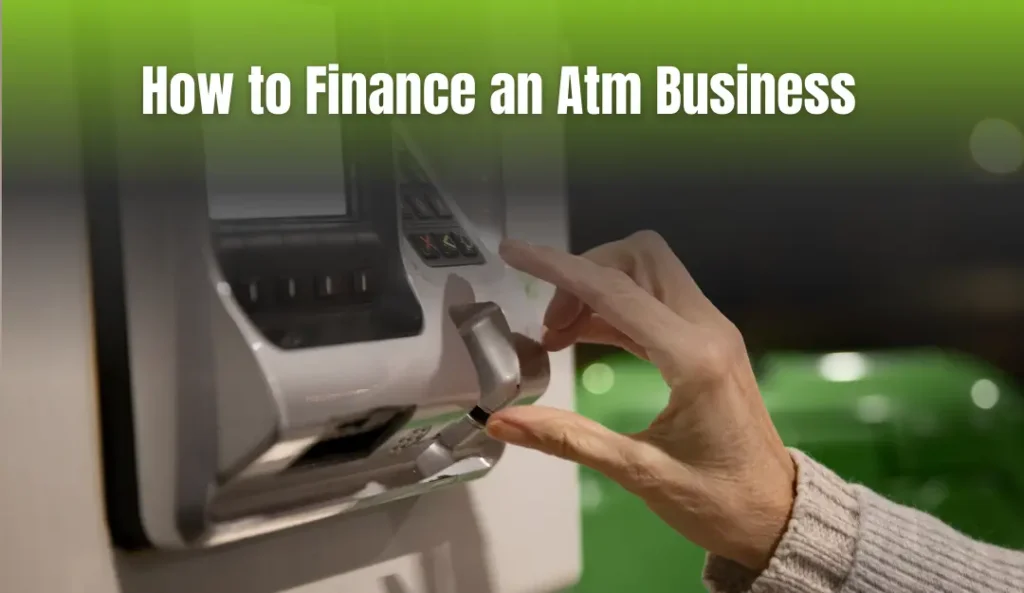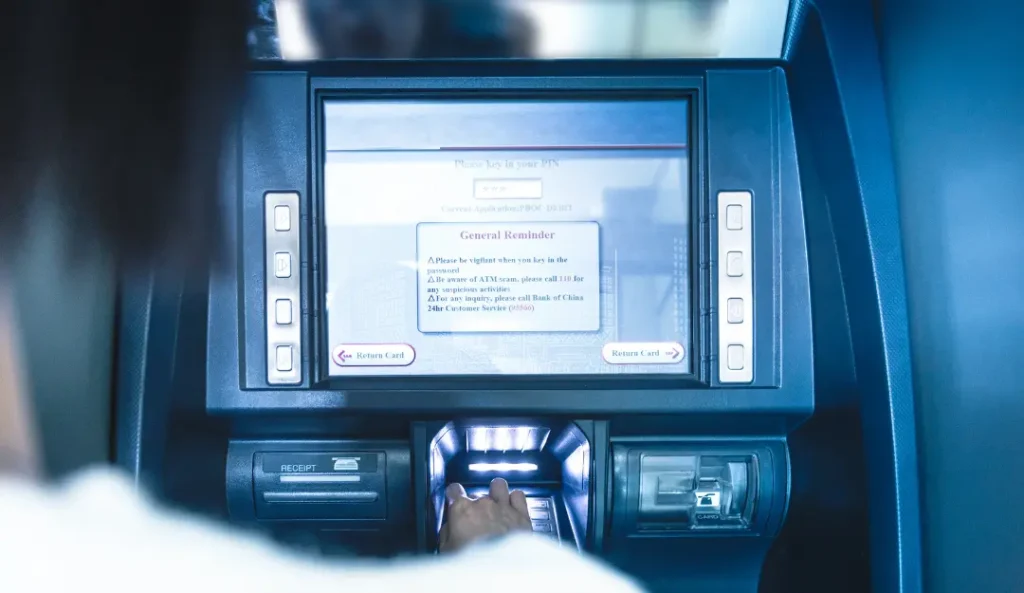
The ATM business can be a lucrative venture, offering recurring revenue through transaction fees. However, like any business, it requires a solid financial strategy to ensure long-term success. If you’re thinking of entering the ATM business, understanding the financing options, costs involved, and strategies to make the business profitable is crucial. In this blog, we’ll break down everything you need to know about financing an ATM business and how to make it a successful and profitable enterprise.
What is the ATM Business Model?
Before delving into financing, it’s essential to understand how the ATM business works. ATM business owners earn revenue primarily through transaction fees. These fees, typically ranging from $1 to $5 per transaction, depend on several factors, including the location of the machine, the transaction volume, and whether the ATM is independently owned or leased.
Here are the primary ways ATMs generate income:
- Surcharge Fee: The fee charged to users for accessing the ATM.
- Location Fees: Business owners where ATMs are placed may pay a monthly or per-transaction fee to the ATM owner.
- Interchange Fees: These are fees paid by the customer’s bank for processing the withdrawal.
Initial Investment Required for an ATM Business
Setting up an ATM business involves significant upfront costs. These costs can be broadly categorized into the following areas:
1. Purchase or Lease of ATM Machines

One of the most significant expenses is purchasing or leasing ATM machines.
- Purchase: The price of an ATM can range from $2,000 to $8,000 per machine. The price varies based on the machine’s features, brand, and condition.
- Leasing: If you don’t want to purchase the machine outright, you can opt to lease an ATM. Leasing costs typically range from $100 to $400 per month per machine.
2. Installation and Setup Costs
- Installation Fees: Professional installation is required to set up the machine and ensure it’s working correctly. This can cost anywhere between $500 and $2,000.
- Maintenance and Repairs: Routine maintenance, such as replenishing cash, fixing technical issues, and updating software, will be necessary. These costs typically run from $100 to $500 per month.
3. Cash for ATM Operations
ATMs require cash to operate, which must be continually replenished. For example, an ATM may require $50,000 or more to be loaded with cash, depending on its usage. This upfront cash requirement is an ongoing expense as you need to maintain an adequate cash flow for your ATM’s operation.
4. Transaction Processing and Bank Fees
ATMs need to connect to banking networks to process transactions. Banks charge ATM owners processing fees, which can range from $0.15 to $0.25 per transaction. Additionally, the cost of a merchant account may be necessary for transaction processing.
How to Finance an ATM Business
Financing an ATM business can be challenging, but there are several options available to fund your venture. for more visit :ATM Business Equipment Financing Program
Below are some of the most common funding sources:
1. Personal Savings
One of the simplest ways to finance an ATM business is by using your personal savings. While this option allows you to avoid taking on debt or dealing with external investors, it comes with the risk of depleting your personal finances. If you have enough savings to cover the initial investment, this can be a straightforward path.
2. Business Loans

If personal savings aren’t enough to fund your business, securing a business loan can be an excellent alternative.
- Traditional Bank Loans: You can apply for a business loan through a bank, but it may require you to have a strong credit history and a detailed business plan.
- SBA Loans: The Small Business Administration (SBA) offers loans to small businesses with favorable terms. However, these loans come with a lengthy approval process and require significant documentation.
3. Private Investors
Some ATM business owners raise capital by partnering with private investors. In exchange for funding, investors typically require equity in the business. This option allows you to share the financial burden while gaining access to capital that would otherwise be out of reach.
4. ATM Placement Services
If you lack the capital to purchase ATMs, partnering with an ATM placement service can be a viable solution. These companies provide the ATM machines, and you simply manage the cash flow, stock, and maintenance of the machines. In return, you share a portion of the transaction fees.
5. Crowdfunding
While not as common, crowdfunding platforms such as Kickstarter or Indiegogo can be used to raise funds. You would need to present your ATM business idea to potential backers, offering them an incentive in exchange for their support.
Key Operational Costs in the ATM Business
Once your ATM business is up and running, there are several ongoing operational costs that you must manage:
1. Cash Replenishment
Maintaining sufficient cash in the ATMs is essential for ensuring the machines stay operational. Depending on the volume of transactions, you may need to replenish the machines weekly or even daily.
- Armored Car Service: For security reasons, many ATM operators use armored car services to transport cash. This service can cost between $100 to $500 per trip.
2. Transaction Fees
You must also account for transaction processing fees. These fees are generally a small percentage of each transaction, deducted by the payment processor or bank.
3. Maintenance and Repairs
Routine maintenance is necessary to ensure the ATM operates smoothly. You will also need to pay for repairs if any parts of the machine break down. These costs can range from $100 to $500 per month, depending on the frequency of repairs.
4. Location Fees
If your ATMs are placed in third-party locations such as convenience stores, shopping malls, or gas stations, you will need to pay a location fee. This fee can be a percentage of the surcharge or a flat monthly rate.
5. Security Measures
ATMs require proper security measures to prevent theft and vandalism. This can involve installing cameras, alarm systems, and hiring security personnel, adding additional operational costs.
Profitability and Return on Investment (ROI)
Understanding the potential ROI is key to determining whether an ATM business is a good investment. Typically, an ATM that processes 100 transactions per day at an average fee of $2.50 per transaction can generate up to $7,500 per month.
However, after subtracting operational costs, such as cash replenishment, maintenance, processing fees, and location fees, the net profit can be lower. But with the right location and high transaction volume, ATMs can generate substantial returns, with some owners seeing an ROI of 20% to 30% annually.
How to Scale Your ATM Business
Once your ATM business is up and running, scaling it can significantly increase your revenue. To expand, you can:
- Purchase More ATMs: Gradually purchase more machines to expand your business.
- Negotiate More Locations: Partner with more retail locations to place your ATMs in high-traffic areas.
- Increase Transaction Volume: Focus on high-traffic areas and improve machine visibility to boost transaction volume.
With careful planning and strategic growth, your ATM business can become a highly profitable enterprise.
Conclusion
Financing an ATM business requires careful planning, sufficient capital, and an understanding of the various costs involved. By exploring different funding options such as personal savings, business loans, private investors, or ATM placement services, you can secure the necessary capital to launch your business. Once operational, managing cash flow, transaction fees, and maintenance costs will be critical for profitability. With the right strategy and an eye on expanding your operations, the ATM business can provide a steady revenue stream and significant returns on investment.



